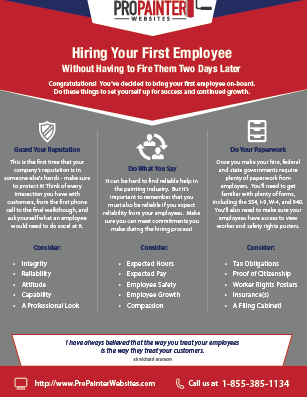Seasonal Considerations For Industrial Outside Paint: What You Required To Know
Seasonal Considerations For Industrial Outside Paint: What You Required To Know
Blog Article
Author-Leach Rodriquez
When you're planning a business exterior paint job, seasonal elements can make or damage your results. You'll intend to consider just how temperature and moisture effect paint application and drying out times. Picking the appropriate period can ensure your paint sticks effectively and lasts much longer. But which periods are absolutely the best for this type of work? Let's discover the crucial elements that can impact your project's success.
The Impact of Temperature on Paint Application
When you're intending a commercial outside paint project, the temperature level can significantly impact exactly how well the paint adheres and dries out.
Ideally, you intend to paint when temperature levels vary between 50 ° F and 85 ° F. If it's as well cool, the paint may not heal properly, resulting in concerns like peeling off or splitting.
On the other hand, if it's too warm, the paint can dry out as well quickly, avoiding appropriate attachment and leading to an uneven surface.
You should also think about the moment of day; early morning or late afternoon uses cooler temperature levels, which can be more beneficial.
Constantly examine the manufacturer's referrals for the details paint you're making use of, as they frequently offer support on the suitable temperature range for optimal results.
Humidity and Its Result on Drying Times
Temperature level isn't the only ecological variable that affects your commercial external painting task; moisture plays a considerable role also. High moisture degrees can slow down drying times substantially, impacting the total high quality of your paint task.
When the air is filled with wetness, the paint takes longer to treat, which can result in issues like bad adhesion and a higher risk of mildew growth. If you're painting on a specifically moist day, be prepared for extensive delay times between coats.
It's critical to check neighborhood weather conditions and strategy appropriately. Ideally, aim for moisture degrees between 40% and 70% for optimal drying out.
Keeping these factors in mind guarantees your task stays on track and delivers an enduring finish.
Best Seasons for Commercial Exterior Painting Projects
What's the best season for your business external painting jobs?
Springtime and early autumn are commonly your best bets. During these periods, temperatures are moderate, and humidity degrees are commonly lower, developing ideal conditions for paint application and drying out.
Stay clear of summer's intense heat, which can create paint to completely dry too rapidly, resulting in inadequate bond and finish. Likewise, winter season's chilly temperature levels can hinder correct drying and healing, running the risk of the long life of your paint task.
Go for days with temperature levels in between 50 ° F and 85 ° F for optimum results. Remember to inspect the neighborhood weather prediction for rain, as wet conditions can wreck your project.
Planning around these elements guarantees your paint job runs efficiently and lasts longer.
Conclusion
Finally, planning your commercial external paint tasks around seasonal considerations can make a considerable distinction in the outcome. By scheduling job during the perfect temperatures and moisture levels, you'll make certain much better attachment and drying out times. Remember to watch on residential painting contractors and pick the correct time of year-- springtime and very early fall are your best options. Taking https://programminginsider.com/why-you-should-hire-fagan-painting-for-your-interior-and-exterior-painting-needs/ will assist you accomplish a resilient and expert surface that lasts.
